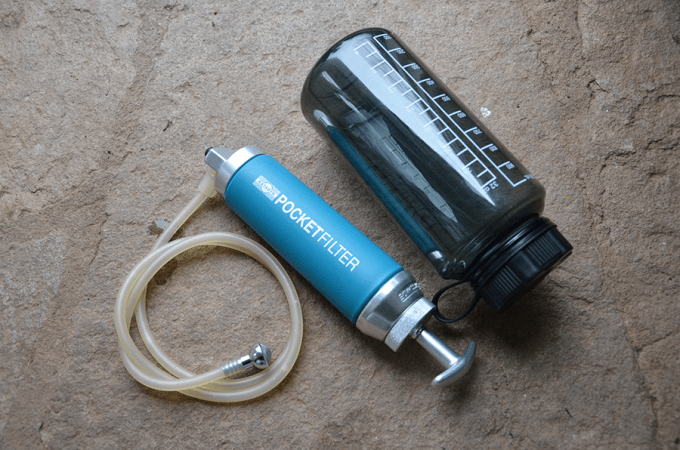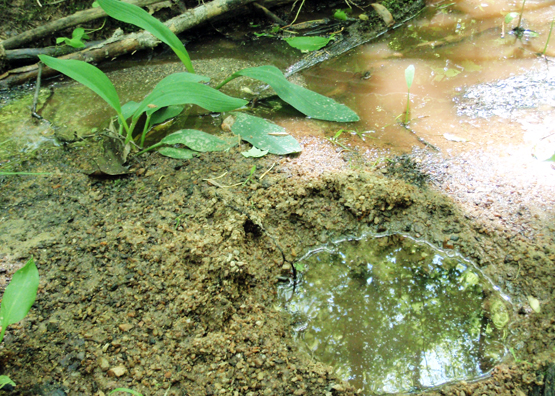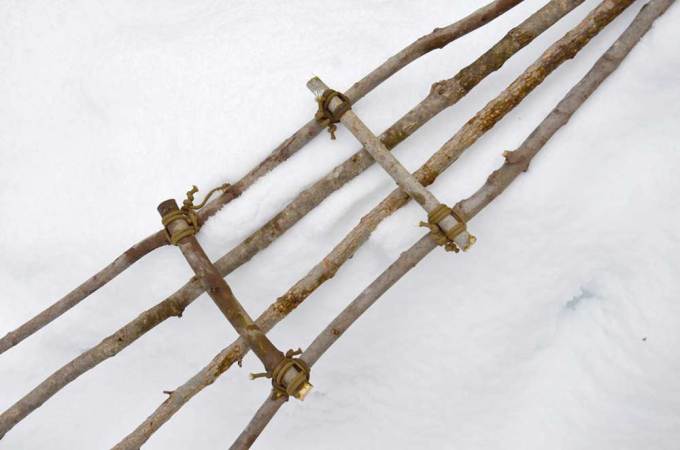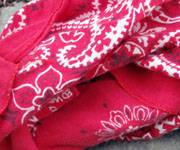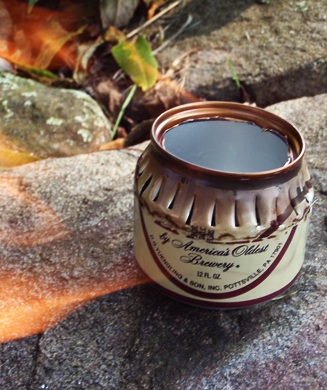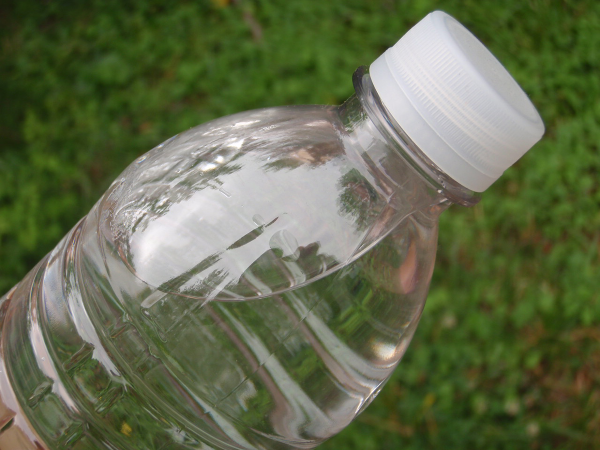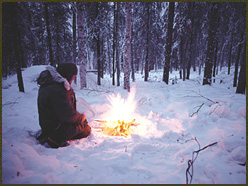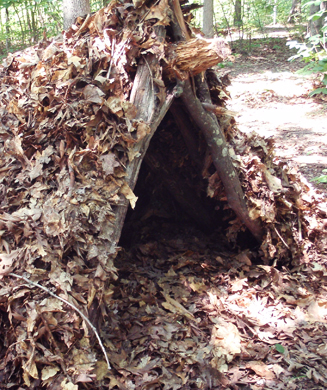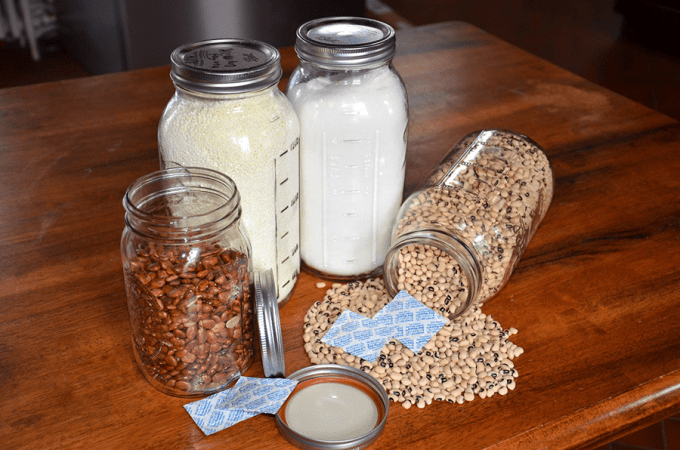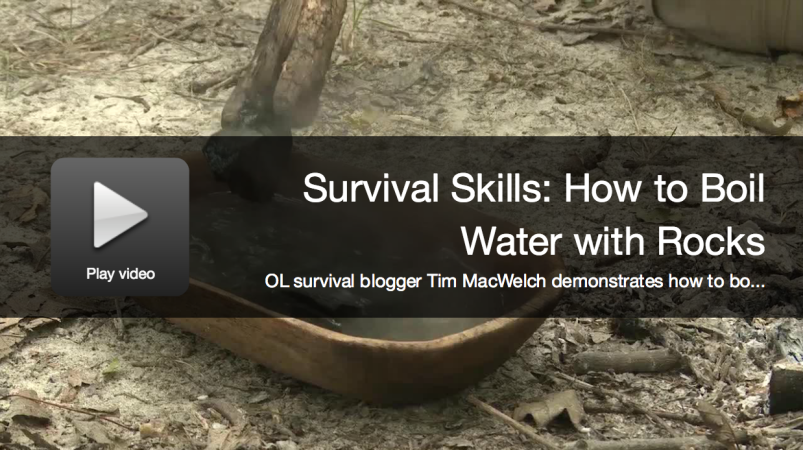Waterborne pathogenic organisms have been, and will continue to be, a huge threat to the safety and health of anyone who is providing their own water supply. Dysentery and other water related ailments have been killing for millennia, and it’s still happening right now. The WHO has estimated that water-borne pathogens kill as many as 3.4 million people a year worldwide. This makes the ability to filter water a critical survival issue. And while a tripod filter won’t spit out safe water, it provides us with an excellent “first step” in your disinfection system (especially important if you have muddy water which would hopelessly clog a commercial water filter). Don’t let your family fall victim to the global epidemic of deadly water.
Build Yourself A Tripod Filter
Collect three sticks, live or dead, each one about 3-4 feet long. Carve a point on one end of each stick, so that the tripod legs can stick into the ground a little. Lash them together at the unsharpened end and stand up the tripod. Tie three pieces of triangular cloth into the tripod, so that each one sits flat (one above the other). In the smallest piece of cloth at the top of the tripod, pack in green grass leaves or place in a folded bundle of cloth. In the second layer, add crushed black charcoal from a fire (no ashes, you don’t want to make lye). In the bottom layer, add clean sand.
Use It Right
With no container under your tripod filter, pour a little water into the top level and watch it trickle through the entire unit. This will remove mud and clay from your sand, and flush out tiny particles of charcoal. Once the water seems to be free of these, then place your container under the filter and pour a trickle of water into the top level of this simple gravity fed system. This filter may remove many different particles and some of the largest organisms, but understand that the water is not yet safe to drink. It will need boiling, chemical or UV treatment, or filtration through a proper store-bought water filter – which will now last a whole lot longer thanks to your tripod “pre-filter”.
Pros
There are some advantages to this old school filter. Here are some of the top ones:
—The filter can be built from a wide range of natural materials and some cloth.
—It’s slightly portable. Just dump out the contents, close up the tripod and move it to a new location.
—It improves the clarity and taste of the water when built with effective materials.
Cons
There are always cons when dealing with field-built gizmos. Here are the worst:
—It doesn’t remove many of the pathogens.
—You’ll need to have a fire to get the charcoal, or get lucky by finding the charcoal remnants of someone else’s fire.
—Depending on your location and the season, you may not find sand or green grass.
—It can lull people into a false sense of security regarding their water’s safety.
Do you have experience with this off grid oasis? Do you feel like it’d be handy in a survival situation? Please tell us your thoughts by leaving a comment.

